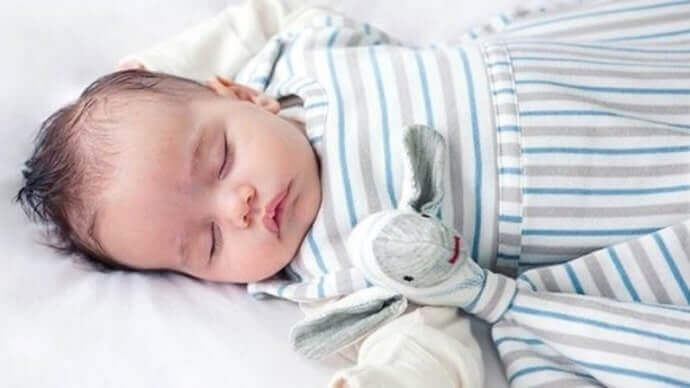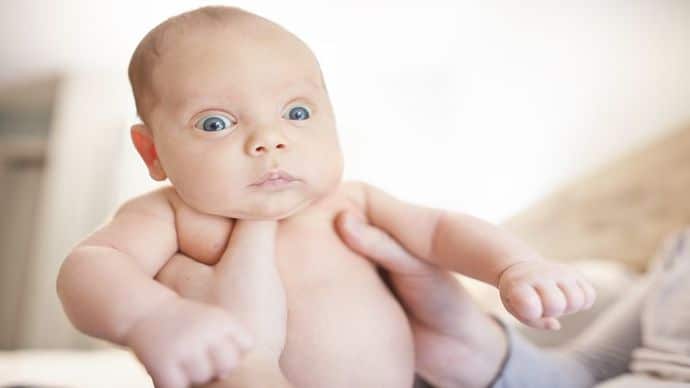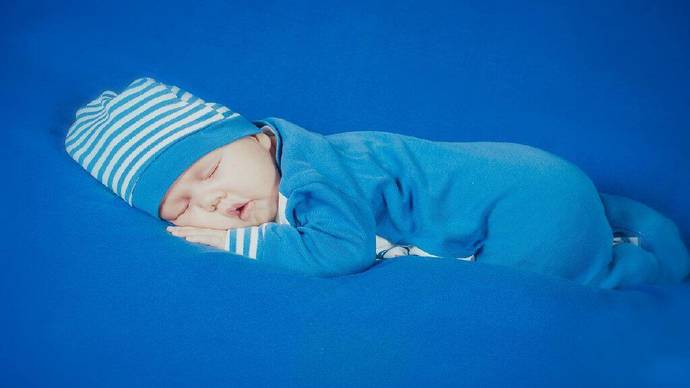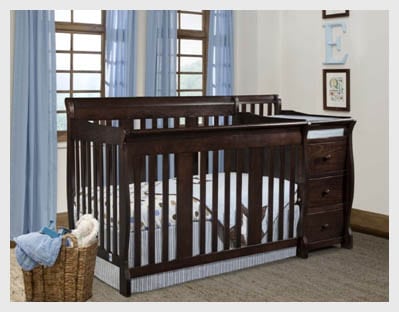As a new parent, you might be wondering if baby sleep sacks are a necessary item for your little one. The answer is unequivocally yes! When it comes to promoting safe sleep, baby sleep sacks are a crucial tool recommended by the American Academy of Pediatrics (AAP).
Not only do they offer a cozy and comfortable sleeping environment, but they also prevent the risk of Sudden Infant Death Syndrome (SIDS). In this ultimate guide, we will explore the importance of baby sleep sacks in adhering to safe sleep recommendations and how they can benefit both you and your baby.
Key Takeaways:
- Baby sleep sacks are a necessary item for promoting safe sleep and preventing SIDS.
- The American Academy of Pediatrics recommends the use of sleep sacks for infants.
- Sleep sacks provide a cozy and comfortable sleeping environment for your little one.
- Using sleep sacks properly can reduce the risk of SIDS while promoting safe sleep practices.
- There are various factors to consider when choosing the right sleep sack for your baby, such as size, fabric, and TOG rating.

Understanding Safe Sleep Recommendations for Babies
You want to provide the best possible sleep environment for your little one. That’s why it’s crucial to understand the safe sleep recommendations set forth by the American Academy of Pediatrics (AAP). These guidelines are designed to promote safe sleep and reduce the risk of Sudden Infant Death Syndrome (SIDS).
According to the AAP, babies should always be placed on their backs to sleep, both for naps and at nighttime. This is the safest sleeping position and reduces the risk of SIDS. It’s also recommended that babies sleep in the same room as their parents, on a firm and flat sleep surface, such as a crib or bassinet.
The AAP also advises against the use of soft bedding, such as pillows, blankets, and crib bumpers. These items can increase the risk of suffocation or strangulation. Instead, babies should be dressed in a wearable blanket or sleep sack, which can provide warmth and comfort without posing a safety hazard.
It’s also important to keep your baby’s sleep surface free from any loose objects, toys, or cords that could pose a danger. Additionally, overheating should be avoided by keeping the room at a comfortable temperature and dressing your baby in appropriate sleep attire.
By following these safe sleep recommendations, you can help ensure that your baby is getting the best possible sleep while minimizing the risk of SIDS and other sleep-related dangers.
The Role of Baby Sleep Sacks in Safe Sleep Practice
As per the Safe Sleep Recommendations of the American Academy of Pediatrics, parents are advised to follow certain guidelines to ensure their baby’s safety during sleep. One of the key recommendations is to avoid loose bedding, which is a suffocation and strangulation hazard for infants. So, how can you provide warmth and comfort to your baby while adhering to the safe sleep recommendations? This is where baby sleep sacks come in.
Baby sleep sacks are wearable blankets that are designed to keep your little one warm and snug without the need for loose blankets. They provide a safe and cozy sleeping environment, reducing the risk of Sudden Infant Death Syndrome (SIDS).
The Benefits of Wearable Blankets
Wearable blankets offer several benefits over traditional swaddles or blankets. Here are a few:
- They prevent overheating: Baby sleep sacks are designed to maintain a comfortable temperature, ensuring that your little one doesn’t overheat while sleeping.
- They reduce the risk of SIDS: By eliminating loose bedding, baby sleep sacks reduce the risk of SIDS, ensuring that your baby sleeps safely.
- They allow for easy diaper changes: Unlike traditional swaddles, baby sleep sacks have a bottom opening, making diaper changes a breeze.
- They offer a cozy and comfortable sleeping environment: Baby sleep sacks are available in various materials, from lightweight cotton to warm fleece, ensuring that your baby is comfortable no matter the season.
How Baby Sleep Sacks Prevent SIDS
Baby sleep sacks play an important role in preventing SIDS. Here’s how:
| How Baby Sleep Sacks Prevent SIDS | Explanation |
|---|---|
| Eliminates loose bedding | Loose bedding is a suffocation and strangulation hazard for infants. Baby sleep sacks eliminate the need for loose blankets, ensuring that your baby sleeps safely. |
| Prevents overheating | Overheating is a risk factor for SIDS. Baby sleep sacks are designed to maintain a comfortable temperature, reducing the risk of overheating. |
| Reduces the risk of entanglement | Traditional blankets and swaddles can cause entanglement, which is a suffocation hazard for infants. Baby sleep sacks are designed to prevent entanglement, ensuring that your baby sleeps safely. |
By following safe sleep recommendations and using baby sleep sacks, you can provide your little one with a safe and comfortable sleeping environment, reducing the risk of SIDS and promoting their overall health and well-being.
Key Benefits of Using Baby Sleep Sacks
Using baby sleep sacks has become a popular choice for parents who want to ensure their baby’s safety while sleeping. Here are some of the key benefits of using baby sleep sacks:
- Safe: Sleep sacks are designed to replace loose blankets in the crib, reducing the risk of suffocation and Sudden Infant Death Syndrome (SIDS).
- Cozy: Sleep sacks are made with soft and comfortable fabrics that help keep your baby warm and cozy without the need for additional layers.
- Comfortable: The design of sleep sacks allows your baby to move freely and comfortably while still providing a snug and secure fit.
- Convenient: Sleep sacks are easy to use and come in a variety of sizes and styles to fit your baby’s needs.
When it comes to keeping your baby safe and comfortable while sleeping, using a baby sleep sack is a wise choice. Not only do they provide a safe sleeping environment, but they also offer all the comfort and convenience that parents need to ensure a peaceful night’s sleep for their little one.
Choosing the Right Baby Sleep Sack for Your Little One
When it comes to baby sleep sacks, choosing the right one is crucial. Not only does it ensure your baby’s comfort, but it also plays a significant role in keeping your baby safe during sleep. Here are some important factors to consider when choosing a baby sleep sack:
Size
Choosing the right size sleep sack is essential for your baby’s safety and comfort. A sleep sack that is too big can lead to the baby slipping down inside, which can be dangerous. On the other hand, a sleep sack that is too small can be uncomfortable and restrict movement. Make sure to follow the size chart provided by the manufacturer and choose the right size for your baby’s weight and height.
Fabric
The fabric of the sleep sack is also a crucial factor to consider. It should be soft, breathable, and gentle on the baby’s delicate skin. Cotton, bamboo, and muslin are great fabric choices for sleep sacks as they are soft and breathable. Avoid synthetic materials such as polyester, which can trap heat and cause discomfort.
TOG Rating
The TOG rating is a measure of a sleep sack’s warmth level. It is essential to choose a sleep sack with a TOG rating appropriate for the room temperature where the baby will sleep. A higher TOG rating indicates a warmer sleep sack suitable for colder temperatures, while a lower TOG rating is for warmer weather. The recommended TOG rating for a sleep sack should be between 0.5 and 2.5, depending on the room temperature.
Tips for Safe and Comfortable Sleep with Baby Sleep Sacks
Using a baby sleep sack can help promote safe and comfortable sleep for your little one, but it’s important to use it correctly. Here are some tips to ensure your baby is sleeping soundly and safely:
Choose the Right Size
Ensure that you choose the right size sleep sack for your baby. A sleep sack that is too big can be a suffocation hazard, while one that is too small can limit your baby’s movement and potentially overheat them. Refer to the size chart provided by the manufacturer and measure your baby’s height and weight before purchasing.
Consider the Fabric
Choosing the right fabric is crucial for ensuring your baby’s comfort. Opt for a soft, breathable fabric like cotton or bamboo that won’t irritate your baby’s delicate skin. Avoid synthetic materials that can trap heat and moisture, increasing the risk of overheating and discomfort.
Check the Temperature
Ensure that your baby is sleeping in a room that is at a comfortable temperature, ideally between 68-72°F (20-22°C). Use a room thermometer to monitor the temperature and adjust your baby’s clothing and sleep sack accordingly. Most sleep sacks come with a tog rating, which indicates their warmth level. Choose a sleep sack with the appropriate tog rating for the current room temperature.
Follow Safe Sleep Guidelines
Always follow the safe sleep guidelines recommended by the American Academy of Pediatrics. Place your baby on their back to sleep, and ensure that their sleep environment is free from any loose bedding, pillows, or toys that could pose a suffocation hazard. Also, never use a sleep sack in combination with a swaddle or any other loose bedding.
Monitor Your Baby
Always keep an eye on your baby while they are sleeping in a sleep sack. Check on them regularly throughout the night to ensure that their sleep sack is not riding up onto their face or causing any discomfort. Remember to never cover your baby’s head or face with the sleep sack or any other item.
Transition Gradually
As your baby grows and becomes more mobile, they may start to outgrow their sleep sack. To prevent them from becoming entangled or overheated, it’s important to transition them to a regular blanket gradually. Start by leaving one arm out of the sleep sack, then both arms, and eventually transition to a blanket once they are able to roll over independently.
By following these tips, you can help ensure that your baby is sleeping safely and comfortably in their sleep sack, reducing the risk of Sudden Infant Death Syndrome (SIDS) and promoting a peaceful night’s sleep for everyone.
Conclusion
As a parent, ensuring the safety and well-being of your baby while they sleep is of the utmost importance. Baby sleep sacks are an essential tool in adhering to safe sleeping recommendations and preventing Sudden Infant Death Syndrome (SIDS).
By using sleep sacks properly and following the recommendations set forth by the American Academy of Pediatrics, you can create a cozy and safe sleeping environment for your little one. Remember to choose the right size and fabric, and consider the TOG rating to ensure your baby’s comfort and safety.
Implementing these tips will help you create an optimal sleep environment and reduce the risk of SIDS, giving you peace of mind and your baby a good night’s sleep.
Talk to your pediatrician if you have any concerns or questions about baby sleep sacks and safe sleep recommendations.
With the right knowledge and tools, you can provide your baby with a safe and comfortable sleeping environment. Baby sleep sacks are necessary to ensure safe sleep and prevent the risk of SIDS. Make sure to use them during your baby’s sleep time and rest easy knowing your little one is sleeping soundly.




